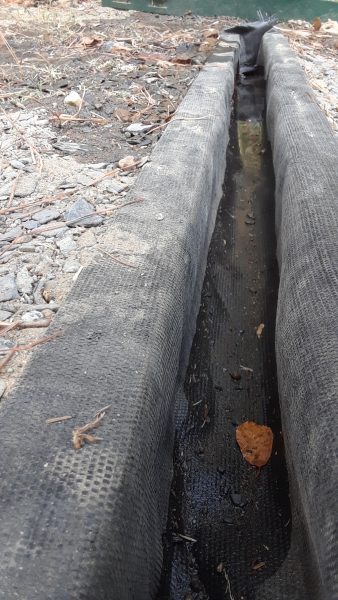Introduction (100 words):

Land erosion poses significant challenges in various industries such as agriculture, construction, and environmental management. Effective erosion control is crucial in protecting our valuable resources and ensuring sustainable development. This blog post aims to provide a comprehensive guide on erosion control practices, with a special focus on agriculture, construction, stormwater management, and watershed restoration. By understanding the importance of erosion control and implementing the right strategies, we can safeguard our lands from destructive forces and promote a greener and more resilient environment.
1. Understanding the Basics of Land Erosion (200 words):
To effectively address land erosion issues, it is essential to understand the root causes and the mechanisms that drive erosion processes. Land erosion can occur due to wind or water action, including rainfall, runoff, or snowmelt. It primarily affects sloped or disturbed land surfaces, potentially leading to soil loss, sedimentation of water bodies, and degradation of ecosystems.
2. Planning and Implementing Erosion Control Measures (300 words):
a) Soil Management: Implementing proper soil management practices is paramount to prevent erosion. By incorporating organic matter, enhancing soil structure, and practicing conservation tillage techniques, soil erosion can be minimized significantly.
b) Vegetative Erosion Control: Incorporating vegetation into erosion-prone areas helps stabilize the soil, absorbs excess water, slows runoff, and reduces wind velocity. Using plants with extensive root systems, such as grasses, shrubs, and trees, effectively reinforces soil stability.
c) Terracing and Contouring: Creating terraces and contours on sloping land helps break the speed of water runoff, allowing it to infiltrate into the soil gradually. This technique greatly minimizes erosion by retaining water in place and prevents the formation of gullies.
d) Mulching: Applying mulch over exposed soil surfaces acts as a protective layer, reducing the impact of raindrop energy and promoting moisture retention. Organic mulches, such as straw or wood chips, enhance soil structure and prevent soil erosion.
3. Erosion Control in Agriculture (200 words):
Sustainable agriculture practices play a pivotal role in preventing erosion and maintaining soil health. Implementing measures like crop rotation, cover cropping, and no-till farming practices reduce erosion risks, enhance nutrient cycling, and boost soil organic matter content. Ensuring balanced nutrient management and practicing efficient irrigation techniques also contribute to erosion control and nutrient runoff reduction.
4. Erosion Control in Construction (200 words):
Construction activities often result in disturbed soil and increased vulnerability to erosional processes. Implementing erosion and sediment control measures, such as silt fences, sediment basins, or erosion control blankets, can effectively mitigate soil erosion on construction sites. Proper site planning, sediment containment practices, and sedimentation ponds also significantly contribute to reducing construction-induced erosion.
5. Importance of Stormwater Management and Watershed Restoration (200 words):
A well-designed stormwater management system is key to preventing erosion caused by excessive rainfall or runoff. Constructed wetlands, retention ponds, and infiltration basins help capture and retain water, allowing it to infiltrate gradually and reducing the impact of runoff on sensitive areas. Watershed restoration projects, such as reforestation efforts or re-establishing native vegetation, contribute to erosion control by stabilizing streambanks and protecting aquatic habitats.
Conclusion (100 words):
Implementing effective erosion control measures is essential for preserving our lands and protecting valuable resources. Whether in agriculture, construction, or ecosystem management, taking preventative measures against soil erosion ensures the long-term sustainability of our environment. By adopting strategies like soil management, vegetation cover, terracing, and proper stormwater management, we can successfully address erosion challenges and create a greener, more resilient future. Let us not overlook the significance of erosion control in our pursuit of sustainable development and responsible land management.
